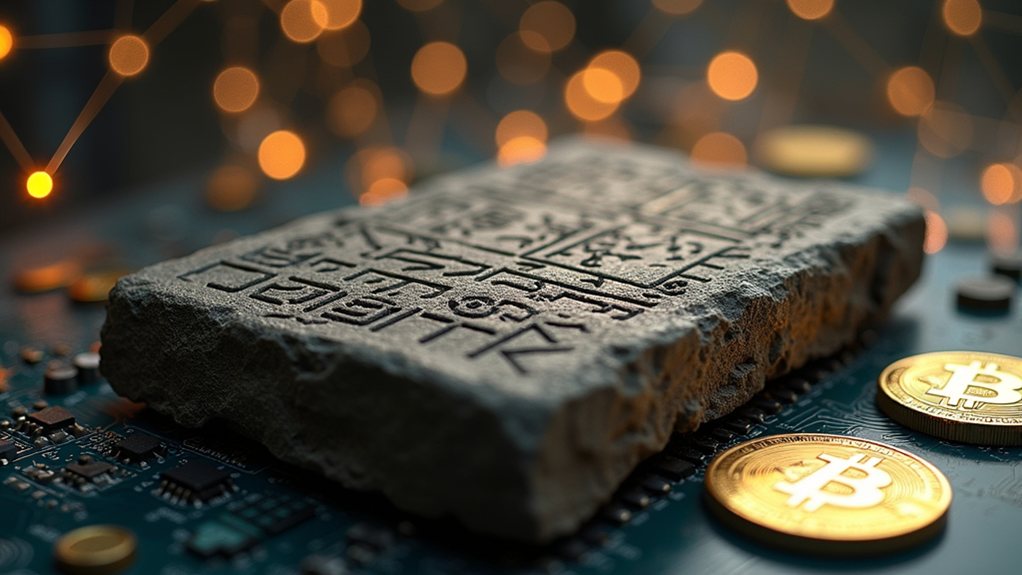Bitcoin originated from a 2008 white paper by an anonymous creator using the pseudonym Satoshi Nakamoto. The cryptocurrency was designed as a peer-to-peer electronic cash system operating without central authority. Bitcoin became operational on January 3, 2009, with the mining of the Genesis Block. It built upon previous digital currency concepts from the cypherpunk movement, including DigiCash and Bit Gold. The mysterious origins add to Bitcoin's fascinating development story.

While many digital currency projects had failed before it, Bitcoin emerged as the first successful cryptocurrency in 2008. On October 31 of that year, a person or group using the name Satoshi Nakamoto published a document called "Bitcoin: A Peer-to-Peer Electronic Cash System." This nine-page white paper described how a digital currency could work without a central authority like a bank or government. Instead, it used a technology now known as blockchain to verify transactions and prevent people from spending the same money twice.
Nakamoto's real identity remains a mystery to this day. The creator communicated through cryptography forums and email lists during Bitcoin's early days. By 2010, Nakamoto had stepped away from the project and hasn't been publicly active since. It's estimated that Nakamoto still owns about one million bitcoins, which would be worth billions of dollars today. Several individuals have been suspected to be Satoshi, including Nick Szabo who conceptualized Bit Gold in 2008, a notable precursor to Bitcoin.
The ideas behind Bitcoin didn't appear from nowhere. The 1990s cypherpunk movement, which focused on privacy through cryptography, laid important groundwork. Earlier digital money concepts like David Chaum's DigiCash, Nick Szabo's Bit Gold, and Wei Dai's B-money all influenced Bitcoin's development. Adam Back's Hashcash, created in 1997, provided techniques that Bitcoin later incorporated. While Satoshi Nakamoto popularized blockchain with Bitcoin, the core concept was actually invented by Stuart Haber and W. Scott Stornetta in 1991 as a system to timestamp digital documents using hash chains. Bitcoin's core innovation was solving the double-spending problem that had plagued previous digital currency attempts.
Bitcoin became real on January 3, 2009, when Nakamoto mined the first block, known as the Genesis Block. This block contained a hidden message referencing a newspaper headline: "The Times 03/Jan/2009 Chancellor on brink of second bailout for banks." This message hinted at Bitcoin's purpose as an alternative to traditional banking systems during the global financial crisis.
Six days after the Genesis Block, Bitcoin's open-source software was released. On January 12, 2009, the first Bitcoin transaction occurred when Nakamoto sent 10 bitcoins to computer scientist Hal Finney. At first, only a small group of tech enthusiasts mined and traded bitcoins, which had almost no monetary value.
The first real-world Bitcoin transaction happened on May 22, 2010, when programmer Laszlo Hanyecz bought two pizzas for 10,000 bitcoins. At the time, this amount was worth about $41. Today, those same bitcoins would be worth hundreds of millions of dollars. This purchase, now celebrated as "Bitcoin Pizza Day," marked an important moment when Bitcoin began functioning as actual money.
Early Bitcoin mining happened on regular computer processors, and anyone could earn the initial reward of 50 bitcoins per block. As Bitcoin gained popularity in 2010 and 2011, the first exchanges like Mt. Gox appeared, making it easier to buy and sell the currency. During this period, Bitcoin's price was still under $1, giving little hint of the massive value increases that would follow in later years.
Frequently Asked Questions
How Does Bitcoin Mining Actually Work?
Bitcoin mining works like a global competition. Miners use powerful computers to solve complex math puzzles. The first to solve it gets to add a new block to the blockchain and earns bitcoin as a reward.
This process requires specialized hardware and lots of electricity. The puzzles automatically get harder as more miners join. Current reward is 6.25 BTC per block.
Is Bitcoin Legal in All Countries?
Bitcoin isn't legal in all countries.
It's allowed in 119 nations but completely banned in 22 countries including China, Egypt, and Algeria.
Bangladesh and Nepal have also outlawed all crypto activities.
Many countries ban it due to concerns about financial stability, money laundering risks, and religious objections.
Only El Salvador has made Bitcoin legal tender, while 62 countries have regulations on its use.
What Determines Bitcoin's Price Fluctuations?
Bitcoin's price fluctuations stem from various factors.
Supply limits (capped at 21 million) create scarcity while demand changes with adoption rates.
Market sentiment shifts with media coverage, regulatory news, and institutional involvement.
Macroeconomic conditions like inflation and interest rates affect investor behavior.
Technical elements including mining difficulty and network updates also impact prices.
Trading volume and speculation contribute to short-term volatility, while accessibility through exchanges influences overall liquidity.
How Secure Is Bitcoin Against Hacking?
Bitcoin's security against hacking comes from its blockchain design. The network uses strong encryption and operates across thousands of computers worldwide.
No central point exists for hackers to target. While individual bitcoin wallets can be vulnerable if poorly protected, the core blockchain hasn't been successfully hacked.
The system's security increases with more users. Most bitcoin thefts occur through exchange breaches or user errors, not core protocol weaknesses.
What Environmental Impact Does Bitcoin Have?
Bitcoin has significant environmental impacts.
It consumes as much electricity annually as Poland, with one transaction using power equal to 45 days of U.S. household use.
It produces 85.89 Mt CO2 yearly, similar to Qatar's emissions.
Bitcoin's water footprint equals 660,000 Olympic pools, and it generates 30.7 metric kilotons of e-waste annually.
Most mining relies on fossil fuels, with coal being the largest source.










